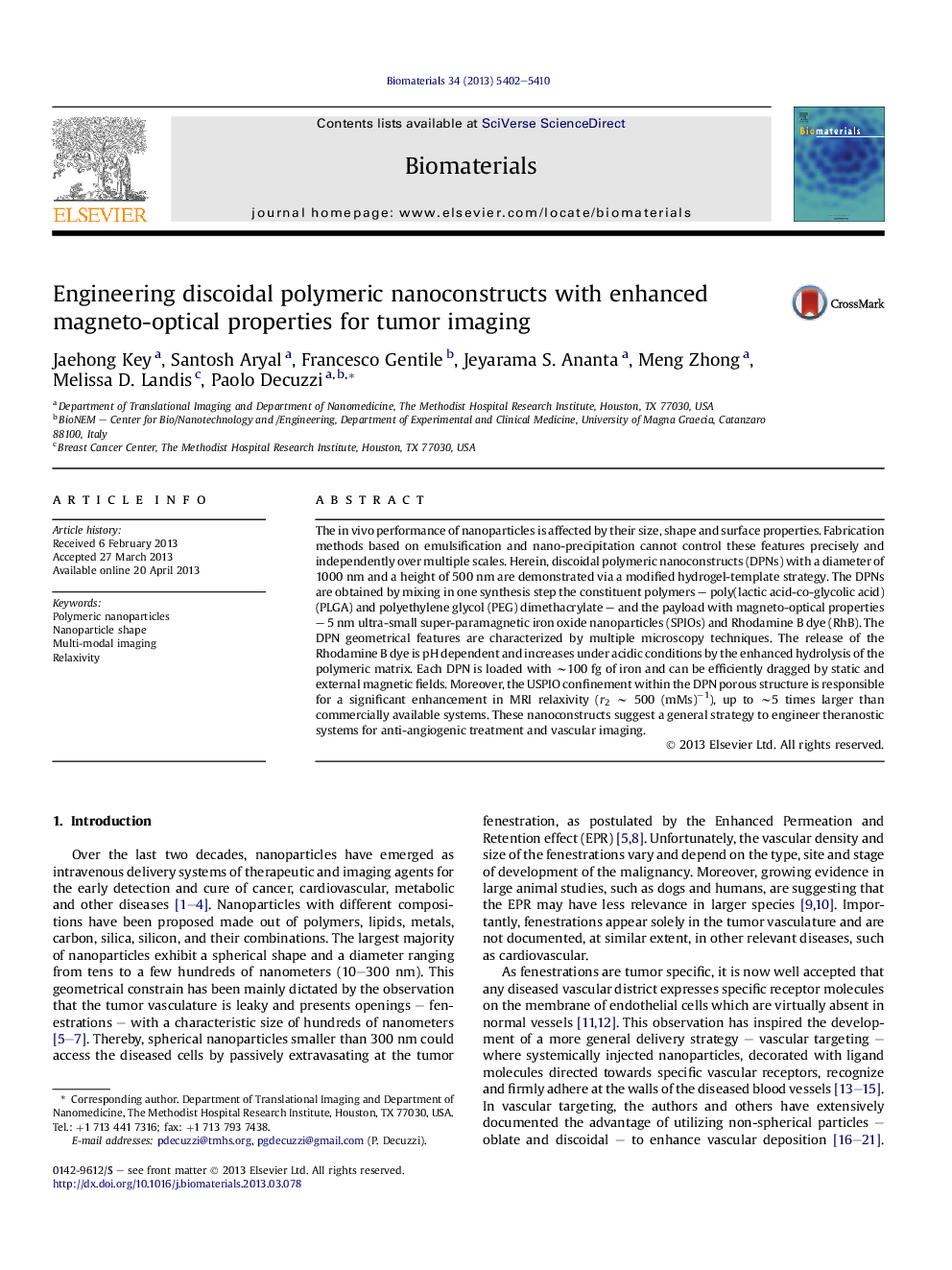| Article ID | Journal | Published Year | Pages | File Type |
|---|---|---|---|---|
| 10229053 | Biomaterials | 2013 | 9 Pages |
Abstract
The in vivo performance of nanoparticles is affected by their size, shape and surface properties. Fabrication methods based on emulsification and nano-precipitation cannot control these features precisely and independently over multiple scales. Herein, discoidal polymeric nanoconstructs (DPNs) with a diameter of 1000 nm and a height of 500 nm are demonstrated via a modified hydrogel-template strategy. The DPNs are obtained by mixing in one synthesis step the constituent polymers - poly(lactic acid-co-glycolic acid) (PLGA) and polyethylene glycol (PEG) dimethacrylate - and the payload with magneto-optical properties - 5 nm ultra-small super-paramagnetic iron oxide nanoparticles (SPIOs) and Rhodamine B dye (RhB). The DPN geometrical features are characterized by multiple microscopy techniques. The release of the Rhodamine B dye is pH dependent and increases under acidic conditions by the enhanced hydrolysis of the polymeric matrix. Each DPN is loaded with â¼100 fg of iron and can be efficiently dragged by static and external magnetic fields. Moreover, the USPIO confinement within the DPN porous structure is responsible for a significant enhancement in MRI relaxivity (r2 â¼Â 500 (mMs)â1), up to â¼5 times larger than commercially available systems. These nanoconstructs suggest a general strategy to engineer theranostic systems for anti-angiogenic treatment and vascular imaging.
Related Topics
Physical Sciences and Engineering
Chemical Engineering
Bioengineering
Authors
Jaehong Key, Santosh Aryal, Francesco Gentile, Jeyarama S. Ananta, Meng Zhong, Melissa D. Landis, Paolo Decuzzi,
